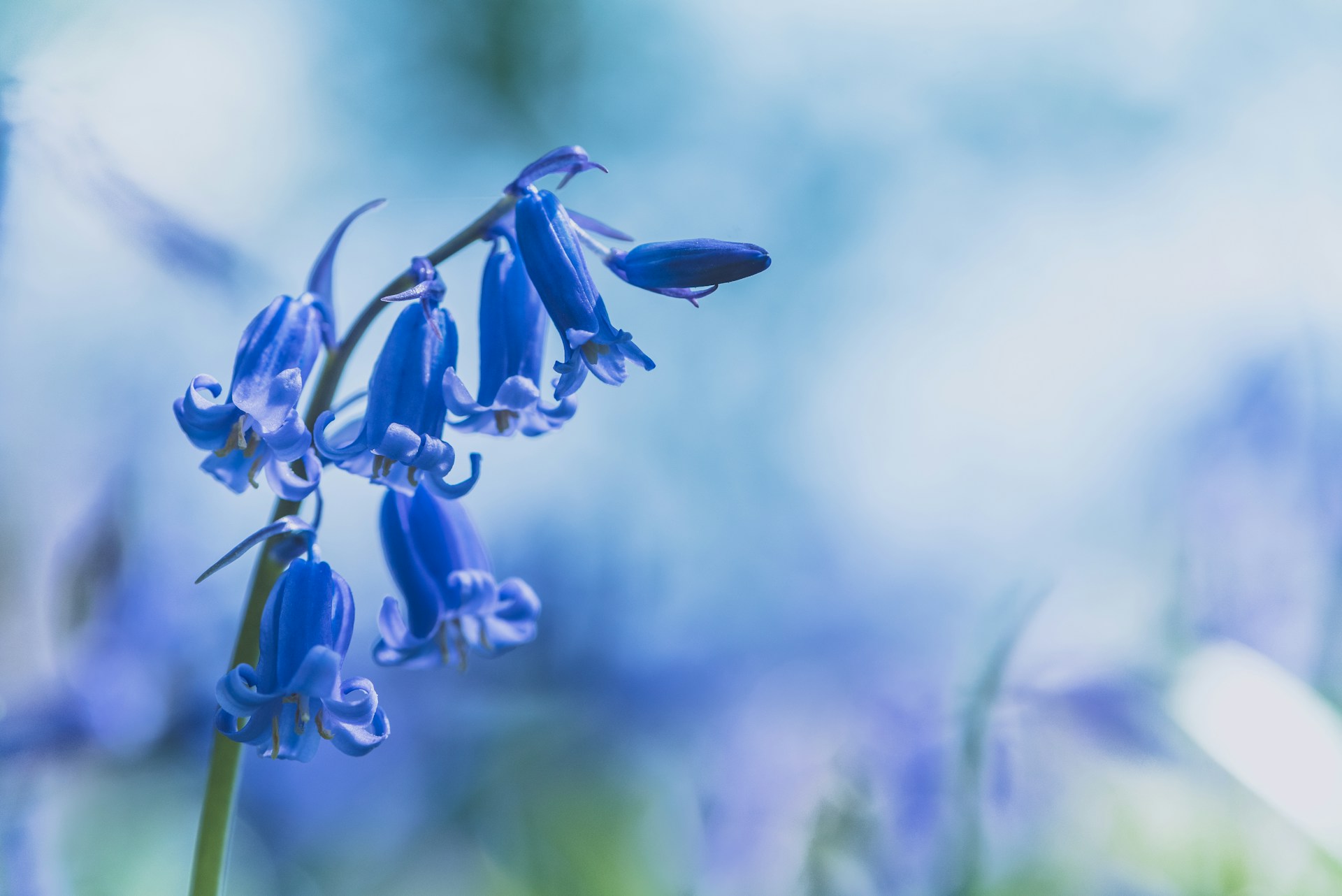
Bluebells, with their enchanting blooms and delicate fragrance, are a beloved sight in woodlands and gardens. These iconic flowers, also known as hyacinthoides non-scripta, are native to Western Europe and have captured the hearts of nature enthusiasts and gardeners alike. Their vibrant blue hues create a breathtaking carpet of color, signaling the arrival of spring.
In this article, we will delve into 18 fascinating facts about bluebell flowers, shedding light on their cultural significance, ecological importance, and unique characteristics. From their folklore and symbolism to their role in supporting biodiversity, bluebells have a rich tapestry of stories to share. Whether you're a botany enthusiast, a nature lover, or simply curious about these captivating blooms, join us on a journey to uncover the wonders of bluebell flowers.
Key Takeaways:
- Bluebell flowers, also known as Hyacinthoides non-scripta, are enchanting spring-blooming plants that symbolize gratitude and everlasting love, while also attracting bees with their sweet fragrance.
- Bluebells are native to Western Europe, where they carpet woodlands with their stunning blue blooms, but they are also toxic to humans and are protected under the law in the United Kingdom.
Bluebells Carpet Woodlands
Bluebells are known for creating beautiful carpets of blue in woodlands, transforming the forest floor into a breathtaking sea of color.
Native to Western Europe
These stunning flowers are native to Western Europe, where they thrive in the dappled shade of deciduous woodlands.
Symbolize Gratitude
Bluebells symbolize gratitude, humility, and everlasting love, making them a popular choice for expressing heartfelt emotions in floral arrangements.
Protected Species
In the United Kingdom, bluebells are protected under the Wildlife and Countryside Act, 1981, making it illegal to remove the bulbs of wild bluebells.
Sweet Fragrance
The delicate blooms of bluebells emit a sweet, enchanting fragrance, attracting bees and other pollinators to the woodland floor.
Toxicity to Humans
All parts of the bluebell plant are toxic to humans if ingested, so caution must be exercised, especially around children and pets.
Mythological Significance
In folklore, bluebells are associated with fairies and are said to ring to call fairies to their gatherings.
Medicinal Uses
Bluebells have been used in traditional medicine to create remedies for ailments such as leucorrhoea and rheumatism.
Hardy Perennials
These flowers are hardy perennials, returning year after year to grace woodlands with their ethereal beauty.
Hybridization
Bluebells readily hybridize, leading to the creation of unique variations in color and form, adding to their allure.
Endangered Habitats
Woodlands, which are the natural habitat of bluebells, are increasingly threatened by urbanization and land development, putting these enchanting flowers at risk.
Spring Bloomers
Bluebells typically bloom in spring, creating a spectacular display of color before the trees' canopy fills out and shades the forest floor.
The Bluebell Festival
In the UK, bluebell festivals are held to celebrate the beauty of these flowers, attracting nature lovers and enthusiasts from far and wide.
Traditional Dye
The sap of bluebells was historically used as a starch for the ruffs of Elizabethan collars and as a traditional dye for cloth.
Longevity
Bluebells can live for many years, with some colonies believed to be over 1000 years old.
Cultivation in Gardens
Gardeners often cultivate Spanish bluebells, a close relative of the native bluebell, in their gardens for their ornamental value.
Artistic Inspiration
Bluebells have inspired countless artists, poets, and writers with their ethereal beauty, becoming a recurring motif in various works of art and literature.
Conservation Efforts
Conservation organizations work tirelessly to protect the natural habitats of bluebells, ensuring that future generations can continue to enjoy these stunning flowers in the wild.
Bluebell flowers, with their rich cultural significance and ecological importance, continue to enchant and inspire all who encounter them, cementing their status as timeless symbols of natural beauty and resilience.
Conclusion
In conclusion, bluebell flowers are not only a stunning sight in woodlands and gardens but also hold cultural, historical, and ecological significance. Their delicate beauty and enchanting fragrance make them a favorite among nature enthusiasts and gardeners. Understanding the various aspects of bluebell flowers, from their symbolism to their growth requirements, adds a deeper appreciation for these captivating blooms. Whether encountered in the wild or cultivated in home gardens, bluebells continue to inspire wonder and admiration, reminding us of the intricate beauty found in the natural world.
FAQs
Are bluebell flowers endangered?Bluebell flowers, particularly the native English bluebell (Hyacinthoides non-scripta), are considered a protected species in the UK due to habitat loss and hybridization with Spanish bluebells. Efforts to conserve and protect these iconic wildflowers are ongoing, emphasizing the importance of preserving their natural habitats.
Can bluebell flowers be grown indoors?While bluebells are typically associated with woodland settings, it is possible to grow them indoors in containers. However, it's important to mimic their natural conditions, providing well-draining soil, partial shade, and a period of dormancy to encourage successful indoor cultivation.
Was this page helpful?
Our commitment to delivering trustworthy and engaging content is at the heart of what we do. Each fact on our site is contributed by real users like you, bringing a wealth of diverse insights and information. To ensure the highest standards of accuracy and reliability, our dedicated editors meticulously review each submission. This process guarantees that the facts we share are not only fascinating but also credible. Trust in our commitment to quality and authenticity as you explore and learn with us.


